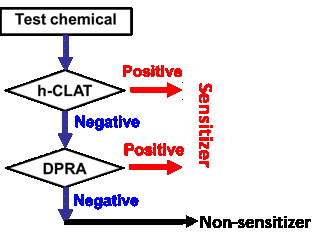

For example, there are criteria for predicting pre-test probability of pulmonary embolism Clinical probability Pulmonary embolism (PE) is the occlusion of pulmonary arteries by thrombi that originate elsewhere, typically in the large veins of the legs or pelvis. Validated, published prevalence-estimating tools should be used when they are available. These examples illustrate the importance of accurate pre-test prevalence estimation because the prevalence of disease in the considered population dramatically influences the test's utility.

Many clinical scoring systems are designed to estimate pre-test probability adding points for various clinical features facilitates the calculation of a score. Pre-test probability is not a precise measurement it is based on clinical judgment of how strongly the symptoms and signs suggest the disease is present, what factors in the patient’s history support the diagnosis, and how common the disease is in a representative population. Other continuous diagnostic tests have diagnostic utility when they have multiple cutoff points or when ranges of results have different diagnostic value. Many clinicians select a cutoff point that can cause a continuous variable to be treated as a dichotomous variable (eg, patients with a fasting blood glucose level > 126 mg/dL are considered to have diabetes).

Other clinical variables, including many typical diagnostic tests, are continuous and have an infinite number of possible results (eg, white blood cell count, blood glucose level). Ordinal variables such as the Glasgow Coma Scale have discrete values that are arranged in a particular order. Nominal variables such as blood type have no particular order. Other categorical results may have many discrete values (eg, blood type, Glasgow Coma Scale) and are termed nominal or ordinal. Some clinical variables have only 2 possible results (eg, alive/dead, pregnant/not pregnant) such variables are termed categorical and dichotomous. Each cutoff point is associated with a specific probability of true-positive and false-positive results. Adjusting a cutoff point to identify more patients with disease (increase test sensitivity) also increases the number of false positives (poor specificity), and moving the cutoff point the other way to avoid falsely diagnosing patients as having disease increases the number of false negatives.

Some patients above and below the selected cutoff point will be incorrectly characterized. For most tests, the distributions overlap such that many of the possible test results occur in patients with and without disease such results are more clearly illustrated when the curves are depicted on the same graph (see figure Distributions of test results Distributions of test results ). Conversely, some disease-free patients have a very high or very low result, but most have a result centered on a different mean from that for patients with disease. Some patients with disease will have a very high or very low result, but most have a result centered on a mean. The distribution of test results for patients with disease is centered on a different point than that for patients without disease. Typically, such quantitative test results (eg, white blood cell count in cases of suspected bacterial pneumonia) follow some type of distribution curve (not necessarily a normal curve, although commonly depicted as such).


 0 kommentar(er)
0 kommentar(er)
